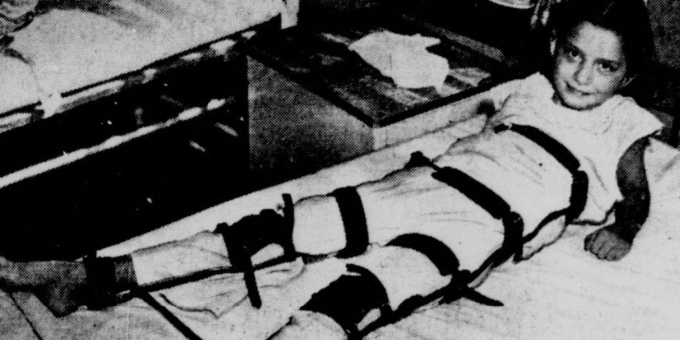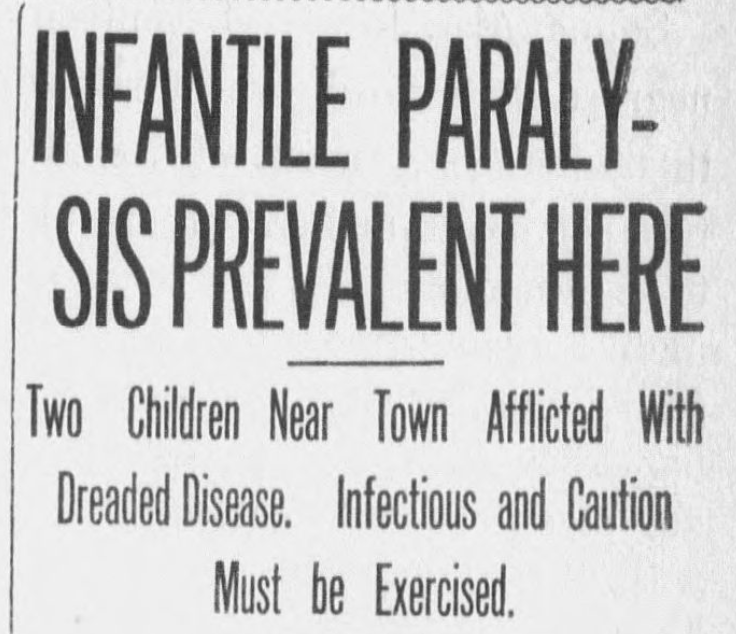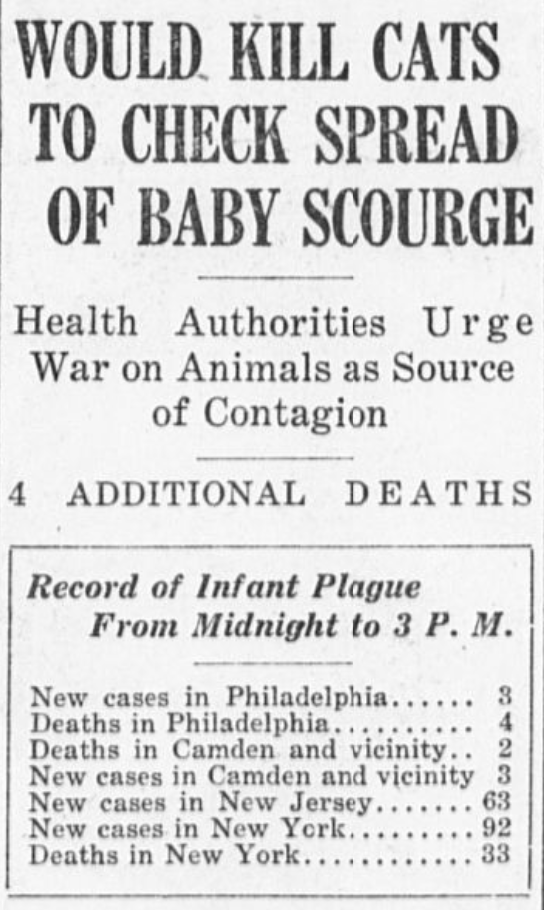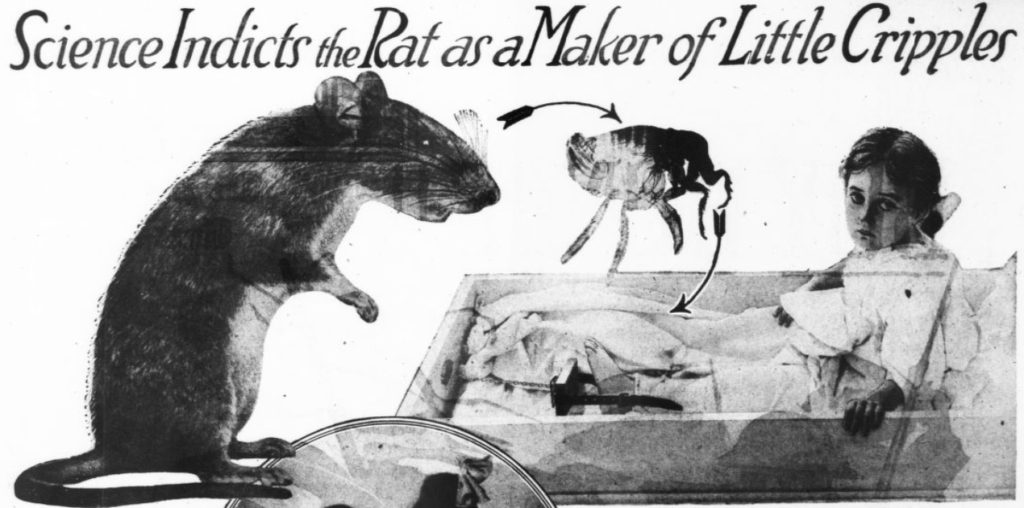
Polio, formerly called infantile paralysis, is a virus that quickly spreads from one person to another.
In the past, polio was blamed on insects, rats, fleas, chickens, cats, and dogs.
Kill the Cat
When the blame landed on pets, people panicked
“If there is a cat about the place where there is a case of infantile paralysis the cat should be killed, for it is known to be one of the most dangerous agencies in spreading the disease…” [Source: Dresden enterprise and Sharon tribune. (Dresden, Tenn.), 14 July 1916.]
Family pets were tossed into the streets to be collected and destroyed.

Recurring Theme
Two years earlier, we saw the same war against cats during a 1912 outbreak.

“The officials of the health department believe that have traced the source of infantile paralysis to the house cat. Many cats have been found with well developed cases.” [Source: The Lakeland evening telegram. (Lakeland, Fla.), 14 Aug. 1912.]
While we know this is not true today, over 100 years ago people were determined to eradicate the threat to their children.

What About Rats?
Although some newspaper articles questioned the logic of going after cats and dogs, while not going after rats.
“And now they are charging some measure of responsibility for the spread of infantile paralysis on cats and dogs. A crusade has been begun against these animals, and 72,000 cats and 8,000 dogs have been disposed of since the first of July. The work of execution is in charge of the Society for the Prevention of Cruelty to Animals and the death penalty is administered as mercifully as possible.
“How is it that we hear nothing about rats in this connection? If rats can carry diseases like bubonic plague and the rest, why not infantile paralysis? One would think that rats would be placed under the ban as well as cats and dogs.” [Source: Middlebury register. (Middlebury, Vt.), 11 Aug. 1916.]

Cats and Dogs Gather Germs in Their Fur
The Day Book, a once popular newspaper, instructed its readers to kill their pets because animals carry diseases on their fur.
“Have you got a cat or a dog around your house? If you have, the best thing to do with it is kill it. That is, if you live in the city and want to help stop infantile paralysis, diphtheria, scarlet fever, measles, and other children’s diseases from spreading this fall and winter….
“’Cats and dogs gather infectious germs in their hair,’ says the official city health bulletin. ‘Children love these four-footed playfellows and are apt to contaminate them with their mouth and nasal secretions through cough and sneeze, as well as through the habit of affectionately burying their faces in the fur of the animals.’” [Source: The day book. (Chicago, Ill.), 15 Sept. 1916.]

And Yet…
In 1912, when all this nonsense started about cats and dogs causing polio, the U.S. Public Health Service was trying to get the word out (unsuccessfully) that pets did not cause polio.
“‘There’s no danger of catching infantile paralysis from cats,’ was the assurance of the United States Public Health Service, today, in answer to a report… that the board of health there believes the epidemic of that disease in Buffalo and other cities may have had its origin in feline pets.” [Source: The Bridgeport evening farmer. (Bridgeport, Conn.), 14 Aug. 1912.]
Back to Rats
By 1918, rats and their fleas were wrongly being blamed for polio outbreaks. Unfortunately, by this time hundreds of thousands of cats had already been killed.

Of course, chickens were blamed for polio in 1913, proving that just about any animal in sight could be blamed for this terrible virus.

People Who Hate Cats
We see the same “cats carry polio” rumor again in 1932 when the International Cat Investigating Society labelled stray cats as “carriers of disease germs and destroyers of bird life.”
The society also claimed that it had statements from several people who claimed they contracted polio from cats.
The U.S. Health Commissioner had to state, once again, that there is no proof people can get polio from cats. [Source: Carolina watchman. (Salisbury, N.C.), 12 Feb. 1932.]

